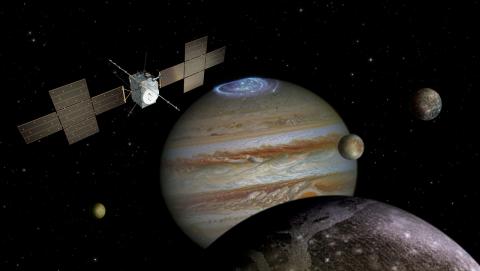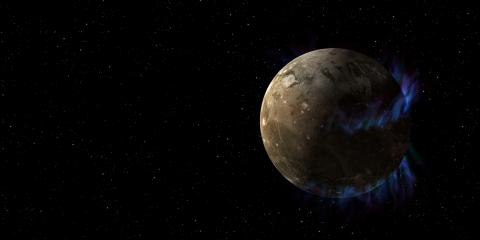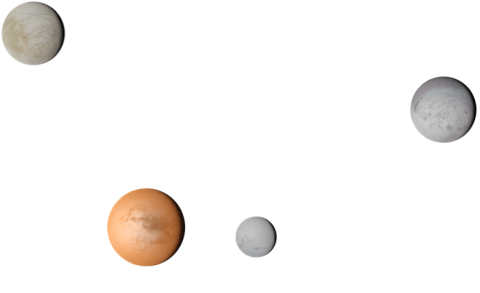About the Instrument
Instrument Type
Particle
The space environment around Jupiter is unlike any other in the solar system: It has the fastest rotation, the strongest magnetic field, and the most powerful aurora and radiation belts. Embedded within this space environment are peculiar moons, including Ganymede — the solar system’s largest moon and the only one that has a magnetic field — and the volcanic moon Io, which, with its sibling ocean moon Europa, is the source of oxygen and sulfur ions found in Jupiter’s magnetosphere — the largest cohesive structure in the solar system.
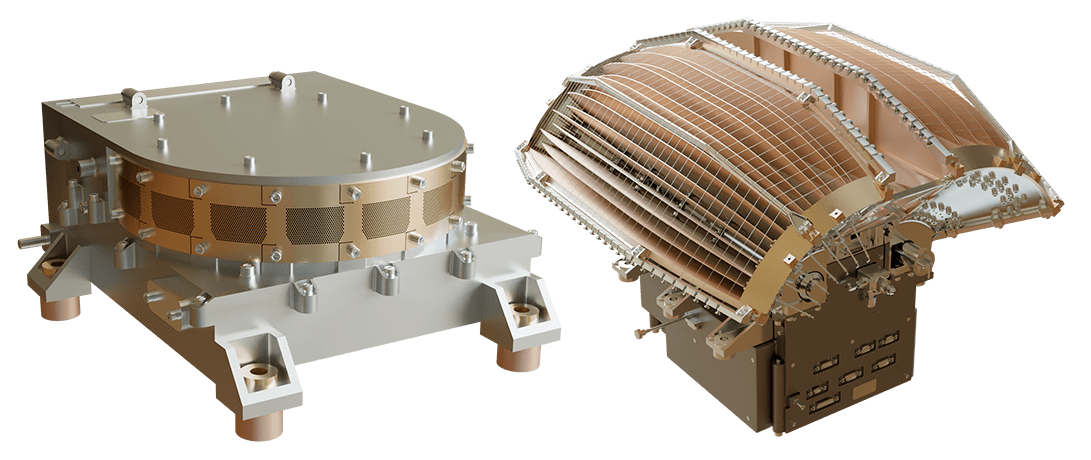
APL built two state-of-the-art instruments for the European Space Agency’s Jupiter Icy Moons Explorer, or JUICE, mission to explore this exciting system: the Jovian Energetic Neutrals and Ions (JENI) instrument and the Jovian Energetic Electrons (JoEE) instrument. JENI will use a technique pioneered at APL to image neutral atoms that form from interactions between the plasma and neutral gases from the moons with Jupiter’s intense radiation environment. JoEE is an innovative electron particle spectrometer that will use 3D-printed collimators to map the processes responsible for making Jupiter the solar system’s largest particle accelerator.
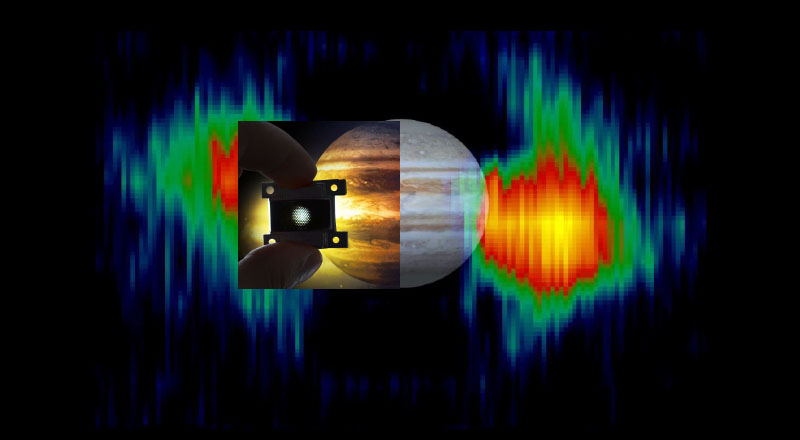
Jupiter's magnetosphere propels electrons to nearly the speed of light and creates a fierce radiation environment around the planet. By simultaneously measuring the electron energy spectra over many directions around the moon Ganymede, JoEE will uncover the missing link needed to understand how Jupiter accelerates electrons to such speeds. JoEE will also help with understanding the interior structure of Ganymede’s subsurface ocean by pinpointing the latitudinal location of Ganymede’s auroras and how they rock back and forth in the Jovian magnetic field.
JoEE’s high-resolution measurements are enabled by nine collimators of unprecedented precision, which is made possible by a 3D-printing process on metal pioneered at APL. This innovative process enables new designs that require extreme tolerances and is projected to revolutionize what is mechanically possible in space.
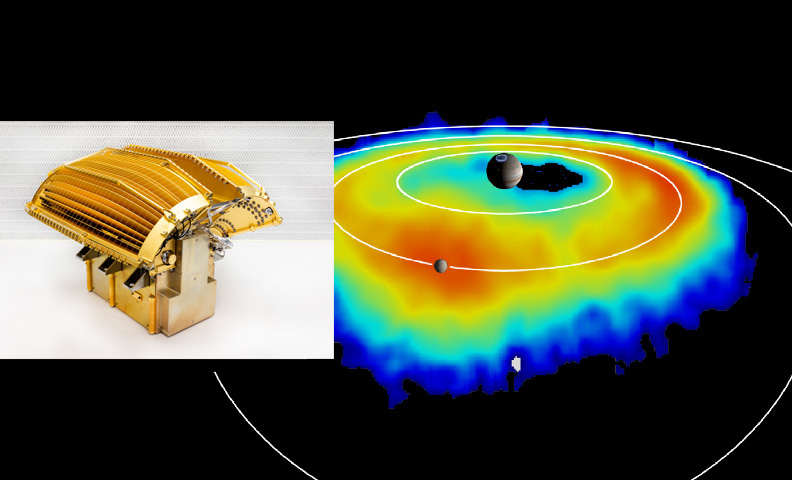
Mission
JUICE
Launched from French Guiana on April 14, 2023, the Jupiter Icy Moons Explorer (JUICE) mission will be the European Space Agency's first large-class mission in the Cosmic Vision 2015-2025 program, spending at least three years making detailed observations of the giant planet Jupiter and three of its largest moons: Ganymede, Callisto and Europa.
Related News & Stories
Go inside APL’s space missions and research, and check out the latest news, features and discoveries from the teams that are probing mysteries from the Sun to the edge of the solar system and beyond.



